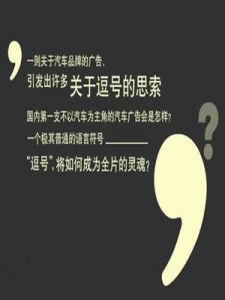歷史
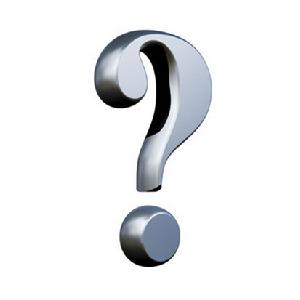 標點符號(問好)
標點符號(問好)西方的標點符號在16世紀主要有朗誦學派和句法學派兩個學派,主要是由古典時期希臘文和拉丁文演變而來,在17世紀後進入穩定階段。俄文的標點是依希臘文而來,到了18世紀採用西歐的標點方法。
古代的漢字作品無標點符號,到了19世紀開始使用“。”作為斷句。日本在8世紀時,使用返點和訓點作為標點系統。
在古文中沒有標點符號,斷句只能靠人的經驗來完成(在文章里加入“句讀符號”:句號貌似現在的句號,表示句子的完結;讀號貌似現在的頓號,表示語氣的停頓),經常出現歧義、造成對文章字句的誤解;例如清人趙恬養〈增訂解人頤新集〉中“下雨天留客天留我不留”一句就有七種解釋方法。1919年,胡適與其他人提出了《請頒行新式標點符號議案》,上海商務印書館1919年2月出版胡適的《中國哲學史大綱》,是正式用白話和新式標點寫作的第一部“新書”。1920年,在陳獨秀、胡適等人的支持下,在上海經營一家小出版社的汪原標點、分段並出版了《水滸傳》,這是中國第一次使用標點符號出版古典書籍。標點符號的使用,對中國的白話文的推廣使用起了很大的作用。
種類
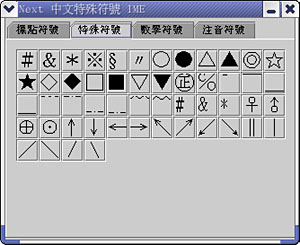 標點符號
標點符號標點符號分為點號、標號、其他標號三大類。
點號有:①句號: 。 ②問號: ? ③感嘆號: ! ④逗號: , ⑤頓號: 、 ⑥分號: ; ⑦冒號: :
標號有:①引號:‘’“” ②括弧:()[] {} ③破折號:— ④省略號: …… ⑤著重號: . ⑥書名號: 《》 ⑦間隔號: · ⑧連線號: - ⑨專名號: ______
其他標號有:①注釋號: ※ ②隱諱號:× ③虛缺號:□ ④斜線號: / ⑤標識號: ▲或● ⑥代替號:~ ⑦連珠號:………… ⑧箭頭號:→ ⑨示亡號: □ (框在已去世的人的名字外面)
常用舉例
| 句號 | 。 | 。 | 占一個字的位置,居左偏下 | 居中 | ||
| 問號 | ? | ? | ||||
| 嘆號 | 驚嘆號、感嘆號 | ! | ! | |||
| 逗號 | , | , | ||||
| 頓號 | 、 | 、 | ||||
| 分號 | ; | ; | ||||
| 冒號 | : | : | ||||
| 引號 | 雙引號 | “ ” | 『』 | 左右符號各占行中一格 | ||
| 單引號 | ‘ ’ | 「」 | ||||
| 括弧 | 夾注號 | 圓括弧 | () | |||
| 方括弧 | [ ] | |||||
| 六角括弧 | 〔〕 | |||||
| 方頭括弧 | 【】 | |||||
| 破折號 | —— | 占兩個字的位置,中間不能斷開,上下居中 | ||||
| 省略號 | 刪節號 | …… | …… | |||
| 連線號 | — | 占一個字的位置 | ||||
| 長橫 | —— | 占兩個字的位置 | ||||
| 半字線 | - | 占半個字的位置 | ||||
| 浪紋 | ~ | 占一個字的位置 | ||||
| 間隔號 | 音界號 | · | 占一個字的位置,上下居中 | |||
| 書名號 | 雙書名號 | 《》 | 左右符號各占行中一格 | |||
| 單書名號 | 〈〉 | |||||
| 書名號 | 浪線書名號 | ﹏﹏ | 文字下方畫浪線 | |||
| 專名號 | __ | 文字下方畫線 | ||||
| 著重號 | · | 文字下方畫點 | ||||
引號問題
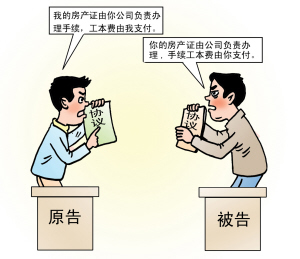 標點糾紛
標點糾紛簡體:先用雙引號“ ”,內部如需再引用,再用單引號‘ ’,若再需引用,使用雙引號“ ”,以此類推。直排仍保持雙引號在外,改用『』和「」。
繁體:先用單引號「」,內部如需要引用,再用雙引號『』。
句點(Full Stop / Period,“.”)
問號(Question Mark,“?”)
感嘆號(Exclamation Mark,“!”)
逗點(Comma,“,”)
冒號(Colon,“:”)
分號(Semicolon,“;”)
連字元(Hyphen,“-”)
連線號(En Dash,“–”)
破折號(Em Dash,“—”)
括弧(Parentheses,小括弧“( )”;中括弧“[ ]”;大括弧“{ }”)
引號(Quotation Marks,雙引號“"”;單引號“'”)
縮寫及所有格符號(Apostrophe,“'”)
特殊符號
特殊符號:§ № ☆ ★ ○ ● ◎ ◇ ◆ □ ℃ ‰ ■ △ ▲ ※ → ← ↑ ↓ 〓 ¤ ° # & @ \ ︿ _ |、
序號一:⒈ ⒉ ⒊ ⒋ ⒌ ⒍ ⒎ ⒏ ⒐ ⒑
序號二:㈠ ㈡ ㈢ ㈣ ㈤ ㈥ ㈦ ㈧ ㈨ ㈩
序號三:⑴ ⑵ ⑶ ⑷ ⑸ ⑹ ⑺ ⑻ ⑼ ⑽
男性和女性標點: ♂ ♀
方程式常用符號:! @ # ¥ α β γ δ ε ζ η θ ι κ λ μ ν ξ ο π
阿拉伯符號:ρστυφχψω% *()
方括弧標點:〈〉《》「」『〖〗【】
圓括弧標點:()[]{}|.』
句讀
中國的古籍,沒有類似今天使用的標點。古代有些文字(例如甲骨卜辭)有時用分行或隔離來表示停頓,這種情況也並不普遍。所以歷來認為學會斷句是讀書的基本要求。漢代表示斷句的符號是“、”和“”。“、”用來表示較小的停頓,“”表示較大的停頓。20世紀初發現的漢簡《流沙墜簡》中有使用了這種符號的簡片。“”和“、”漢朝人稱之為句讀 。這兩種符號到了宋代才逐漸推廣使用,但形態有些改變。一種是句號用“。”,讀號用“、”;另一種是句號讀號都用同樣的點,句號的點用在字旁,讀號的點用在兩字之間。宋元時代出版的書籍,特別是經書,一般不加句讀。句讀符號多用於教學或校勘方面。宋刻本也有仿照校書式印上圈點的,但不多見。
元明刻本小說多在句子的末了加圈,也有一律用“、”或用“。”的。有些戲曲和啟蒙讀物也採取這種方法。此外,明刻本小說還增添了人名號和地名號,前者是在人名右邊加一條直線,後者是在地名右邊加兩條直線。
標點這兩個字,始見於宋代。《宋史·何基傳》:“凡所讀,無不加標點,義顯意明,有不待論說而自見者。”這裡的標點指的是閱讀古書時添加的句讀符號,即所謂舊式標點。
新式標點
新式標點是模仿西方的書寫習慣而借用的 ,在清代末年才開始使用。翻譯家嚴復的《英文漢詁》(1904)是最早套用外國標點於漢語的著述。五四運動前些年,不少作家已經開始使用新式標點。《新青年》雜誌第4卷(1918)也開始部分地使用。由於當時的出版物多採取直排方式,於是使用者都做了不同程度的修改。這樣就出現標準不一的現象。1919年馬裕藻、朱希祖、錢玄同、劉復、周作人、胡適等人聯名提出《請頒行新式標點符號議案》,並在國語統一籌備會第一次大會上議決,1920年由當時的教育部正式頒行。這個議案先說明了使用標點符號的必要性,再列出各種符號,包括句號、點號、分號、冒號、問號、驚嘆號、引號、破折號、刪節號、夾注號、私名號、書名號共12種。
五四運動以後,公布的標點符號逐漸推廣套用。比較西方使用的標點,有幾處明顯的不同:①句號用“。”,不用“·”。②引號用『』和「」,不用“”和‘’。是為了適應直排文字的特點。③西方文字的人名和地名等專有名詞的開頭用大寫字母表示,漢字沒有這種標記,所以要有私名號和書名號。
用法
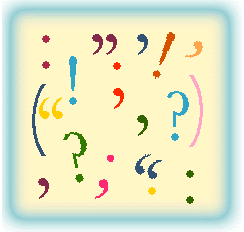 標點符號
標點符號1951年9月,原中央人民政府出版總署公布了《標點符號用法》,同年10月原政務院下達指示,要求全國遵照使用。四十年來,文字書寫和書刊排印已由直行改為橫行,標點符號用法也有了某些發展變化,因此,1990年3月,國家語言文字工作委員會和中華人民共和國新聞出版署重新發布了修訂後的《標點符號用法》。本標準就是在新頒《標點符號用法》的基礎上制定的。
本標準參考了國內標點符號用法的文獻,廣泛聽取了語文學界、新聞界、出版界、教育界的意見。
本標準對漢語書面語中的常見的標點符號用法進行了規定和說明,目的在於使人們正確掌握標點符號用法,以準確表達文意,推動漢語書面語言的規範化。
本標準由國家語言文字工作委員會提出。
本標準由國家語委語言文字套用研究室《標點符號用法》課題組負責起草,主要起草人:龔千炎、劉一玲。
本標準從1996年6月1日起實施,從實施之日起,原《標點符號用法》即行廢止。
1、範圍
本標準規定了標點符號的名稱、形式和用法。本標準對漢語書寫規範有重要的輔助作用。
本標準適用於漢語書面語。外語界和科技界也參考使用。
2、定義
本標準採用下列定義。
句子 sentence
前後都有停頓,並帶有一定的句調,表示相對完整意義的語言單位。
陳述句 declarative sentence
用來說明事實的句子
祈使句 imperative sentence
用來要求聽話人做某件事情的句子。
疑問句 interrogative sentence
用來提出問題的句子。
感嘆句 exclamotory sentence
用來抒發某種強烈感情的句子。
複句、分句 complex sentence ,clause
意思上有密切聯繫的小句子組織在一起構成一個大句子。這樣的大句子叫複句,複句中的每個小句子叫分句。
詞語 expression
詞和短語(詞組)。
詞,即最小的能獨立運用的語言單位。
短語,即由兩個或兩個以上的詞按一定的語法規則組成的表達一定意義的語言單位,也叫詞組。
3、基本規則
3.1 標點符號是輔助文字記錄語言的符號,是書面語的有機組成部分,用來表示停頓、語氣以及詞語的性質和作用。
3.2 常用的標點符號有10種,分點號和標點兩大類。
點號的作用在於點斷,主要表示說話時的停頓和語氣。點號又分為句末點號和句內點號。句末點號用在句末,有句號、問號、嘆號3種,表示句末的停頓,同時表示句子的語氣。句內點號用在句內,有逗號、頓號、分號、冒號4種,表示句內的各種不同性質的停頓。
標號的作用在於標明,主要標明語句的性質和作用。常用的標點有9種,即:引號、括弧、破折號、省略號、著重號、連線號、間隔號、書名號和專名號。
1、引號的五種用法:①表引用②表諷刺或否定③表特定稱謂④表強調或著重指出⑤特殊含義
2、破折號的五種用法:①表注釋②表插說③表聲音中斷、延續④表話題轉換⑤表意思遞進
3、省略號的六種用法:①表內容省略②表語言斷續③表因搶白話未說完④表心情矛盾⑤表思維跳躍⑥表思索正在進行
英語符號
標點符號在書面語中主要用來明確語句的含義,標示一個句子或句子中各個成分的起止,以及彼此間的語法或語義上的關係。英語中使用的標點符號主要有下面這些:
1) 句號(.) (Period 或 Full Stop)
2) 逗號(,) (Comma)
3) 分號(;) (Semicolon)
4) 冒號(:) (Colon)
5) 問號(?) (Question Mark)
6) 撇號(’) (Apostrophe)
7) 引號(“”或‘’) (Quotation Marks)
8) 感嘆號(!) (Exclamation Mark)
9) 破折號(—) (Dash)
10)連字號(–) (Hyphen)
11)括弧([ ]) (Parentheses)
12) 刪節號(…) (Ellipsis)
句號(period)
--Each of the twins wanted to know what the other was doing . (lon)
--There was no smoking in the corridors . (lon)
--I enjoy tennis but don’t play it often . (lon)
用於代表一個單詞的縮略語後面
--B . C . (before Christ) --St . (Street)
--Mon . (Monday) --Ltd . (Limited)
--Jan . (January) --Co . (company)
用於引號之內(Inside quotation marks)
--Mary’s mother answered:“Oh yes, she’s in . ” (col)
--“Margaret,” I said to her, “I’m so glad you came . ” (col)
--What Dorothy said was “My mother’s on the phone . ” (lon)
逗號(Comma)
用於分隔並列的詞和短語(To separate words and phrases in a series)
--We ordered a hamburger, French fries, apple pie, and a coke. (lon)
--He awoke, ate his breakfast , got dressed , and went to work. (tofel)
--He walked with long , slow , steady , deliberate strides. (lon)
--He went across the sidewalk , down the street , and into the bar and grill. (tofel)
用於分開同位語
--Her mother , a Canadian , died when she was five. (col)
--Tom, I’d like you to meet my friend , George. (fofel)
--People , old and young , all came out to greet the guests. (zha)
用於分開表示對比的詞、短語或從句,以及表示轉題的詞或詞組(To set off a contrast word, phrase, or clause; a transitional word or expression)
a. 分開表示對比的詞、短語或從句
--She was not , however , aware of the circumstances. (dic)
--I , on the contrary , envy you because you can work and choose your work. (dic)
--In contrast to his brother , he was always considerate in his treatment of others. (dic)
--We are enjoying ourselves , although the weather is bad. (cge)
--Elizabeth was lively and talkative , whereas her sister was quiet and reserved. (cge)
b. 分開表示轉題的詞或詞組
--incidentally , she found the book you asked for. (dic)
--I went to college. Meanwhile , all my friends got well-paid job. (lon)
--I want to tell you about my trip, but , by the way , how is your mother? (lon)
--This wanted a bit more thinking about, and , in the meantime , there were a hundred and one little things to be done. (dic)
用於yes、no、why、well等詞後的句首(At the beginning of a sentence after yes、no、 why、well,etc)
--Yes , you are right. (dic)
--“Is it raining?” “No , it’s snowing.” (dic)
--You say he is only forty! Why , I know he is at least fifty. (dic)
--Well , old chap, sit down and make yourself comfortable. (dic)
用於句首的短語或從句之後(After a phrase or a clause at the beginning of a sentence)
--Unable to resist , Matilda agreed to betray her country. (形容詞短語) (lon)
--From a personal point of view , I found this a good solution to the problem. (介詞短語) (lon)
--To be perfectly frank , you are a bad driver. (不定式短語) (oxf)
--Having failed twice , he didn’t want to try again. (動詞-ing形式) (oxf)
--Weakened by successive storms , the bridge was no longer safe. (動詞-ed形式) (oxf)
--The game over , we all went home. (獨立結構) (tofel)
--Since we live near the sea , we often go sailing. (副詞從句) (lon)
用於分開直接引語(To set off direct quotations)
-“The radio is too loud , ”she complained. (lon)
--She replied , “My first thought was to protect.” (col)
如果被分開的引語的第一部分不是完整句子,則後面的引述動詞後也須用逗號,引語的第二部分以小寫字母開始。例如:
--“I wonder,” said John , “whether I can borrow your bicycle.” (lon)
--“That man,” I said , “never opened a window in his life.” (col)
用於標寫日期、地址、學位等
日期: Tuesday , April 3 , 2001
地址: 318 First Street , Sacramento , California (門牌號和街號之間無標點)
學位: John Burke , Ph.D. , has written this book.
此外也可用於非正式信件的抬頭或信末署名前的客套語。例如:
--Dear Philip ,
--Sincerely yours ,
用於分開非限定性形容詞從句或插入語
--I have invited Ann , who lives in the next flat. (oxf)
--These books , which you can get at any bookshop , will give you all the information you need. (oxf)
--The trees in that area , it is said , are mostly over thirty feet tall. (zha)
--We’ll have to book our tickets in advance , I’m afraid. (zha)
用於避免費解或誤讀
--What his name is , is of no interest to me. (lon)
--Whatever she does , does not concern me. (lon)
--What one person may think of , another may not. (lon)
--During the summer , days become longer. (沒有逗號,有可能誤讀為Summer days。) (lon)
--Soon after , the meeting was adjourned. (沒有逗號,有可能誤讀為after the meeting。) (lon)
分號(Semicolon)
用在省去連線詞的並列分句之間(Between the clauses of a compound sentence when the conjunction is omitted)
--The summer were wet ; the winter were dry. (tofel)
--Don’t lose that key ; it opens the large suitcase with my new clothes. (tofel)
--Some of us agree with that statement ; some disagree. (dic)
--Heather didn’t call until 10:15 ; we were very upset. (tofel)
--Taylor was, as always, a consummate actor ; with a few telling strokes he characterized King Lear magnificently. (lon)
用於隔開由hence、moreover、however、also、therefore、consequently等轉題詞連線的分句 (To separate clauses jointed by such transitional words as hence, moreover, however, also, therefore, also, therefore, consequently, etc)
--My mother is by herself ; hence I must go home now. (dic)
--Bicycling is good exercise ; moreover, it doesn’t pollute the air. (dic)
--The two sides met again today ; however, they reached no settlement. (tofel)
--It rained ; therefore the game was called off. (dic)
--The Delgado family is moving ; consequently, we’ll have new neighbours within a month. (tofel)
轉題詞位於句末時,前面一般用逗號,後面用句號。例如:
--He said that it was so; he was mistaken , however. (dic)
轉題詞也可放於句首,後面用逗號。例如:
--Nevertheless , she decided to act. (dic)
冒號(colon)
用於列舉事物
--Please send the stipulated items : your birth certificate, your passport and the correct fee. (lon)
--She asked for the following articles : an axe, a hammer, an awl and a saw. (tofel)
--Our main considerations are as follows : safety, speed, and glamour. (tofel)
如果所列舉的事物前面有動詞或介詞,則不可用冒號。例如:
--The colors I chose were red, green, blue, and white. (tofel)
--This design comes in silk, stain, and cotton. (tofel)
用於注釋句之前
--I’ve just had some good news : I’ve been offered a job in a law firm. (lon)
--You can’t count on him to help : he is such a busy man. (zha)
--The man had been drinking heavily : this, not age, explained his unsteady walk.
用於引語之前
--One student commented : “He seems to know his material very well.” (lon)
--In his speech to the United Nations, Mr Teng said : “I come here today….” (tofel)
不過,在現代英語中,直接引語前多半用逗號。如:
--He said , “I am going home.” (lon)
問號(Question Mark)
用於疑問句或表示疑問的陳述句末尾。例如:
--She asked, “How many were in your class ? ” (tofel)
--What can be done to help these people ? (lon)
--How long have you been here ? Ten minutes ? Twenty ? Thirty ? (tofel)
--You are leaving already ? (lon)
撇號(Apostrophe)
用於構成名詞所有格
--Jim’s coat --the boss’s desk
--the woman’s dress --a moment’s rest
--somebody else’s order --everyone’s goal
--one month’s rent --season’s greetings
用於構成動詞短語的緊縮形式
--I have I’ve --will not won’t
--She would she’d --I am I’m
用於構成字母、數字或縮寫等的複數形式
--There are three I’s in that word. (lon)
--How many 5’s have you got? (zha)
--an oversupply of Ph.D.’s (博士學位獲得者的過剩) (zha)
此外,在非正式的語體中,撇號也用來表示縮寫的年份,因此,1984年可寫成 ’84。
引號(Quotation Marks)
主要用於表示中間包入的成分是一句引語。例如:
--He smiled and asked, “Are you her grandson?” (lon)
--“You have to keep trying, Mabel,” he said. (col)
有時也可用來加在書名、報名、劇名和雜誌名等東西的兩端。例如:
--She enjoyed the article “Cities Are for Walking.” (lon)
--Have you read “Red Star Over China”? (zha)
或加在一個詞的兩端,引起人對這個詞的注意。如:
--What’s the difference between “differ” and “differentiate”? (zha)
--He couldn’t spell “mnemonic”, and therefore failed to reach the finals. (lon)
